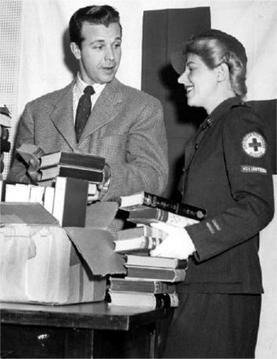Related Research Articles

The Dewey Decimal Classification (DDC), colloquially known as the Dewey Decimal System, is a proprietary library classification system which allows new books to be added to a library in their appropriate location based on subject. It was first published in the United States by Melvil Dewey in 1876. Originally described in a 44-page pamphlet, it has been expanded to multiple volumes and revised through 23 major editions, the latest printed in 2011. It is also available in an abridged version suitable for smaller libraries. OCLC, a non-profit cooperative that serves libraries, currently maintains the system and licenses online access to WebDewey, a continuously updated version for catalogers.

Smith's Bible Dictionary, originally named A Dictionary of the Bible, is a 19th-century Bible dictionary containing upwards of four thousand entries that became named after its editor, William Smith. Its popularity was such that condensed dictionaries appropriated the title, "Smith's Bible Dictionary".

The Scofield Reference Bible is a widely circulated study Bible. Edited and annotated by the American Bible student Cyrus I. Scofield, it popularized dispensationalism at the beginning of the 20th century. Published by Oxford University Press and containing the entire text of the traditional, Protestant King James Version, it first appeared in 1909 and was revised by the author in 1917.
An online encyclopedia, also called an Internet encyclopedia, is a digital encyclopedia accessible through the Internet. Examples include Encyclopedia.com since 1998, Encarta from 2000 to 2009, Wikipedia since 2001, and Encyclopædia Britannica since 2016.

The Children's Encyclopædia was an encyclopaedia originated by Arthur Mee, and published by the Educational Book Company, a subsidiary of Northcliffe's Amalgamated Press, London. It was published from 1908 to 1964. Walter M. Jackson's company Grolier acquired the rights to publish it in the U.S. under the name The Book of Knowledge (1910).

Chambers's Encyclopaedia was founded in 1859 by William and Robert Chambers of Edinburgh and became one of the most important English language encyclopaedias of the 19th and 20th centuries, developing a reputation for accuracy and scholarliness that was reflected in other works produced by the Chambers publishing company. The encyclopaedia is no longer produced. A selection of illustrations and woodblocks used to produce the first two editions of the encyclopaedia can be seen on a digital resource hosted on the National Museums Scotland website.

Who's Who is a reference work. It has been published annually in the form of a hardback book since 1849, and has been published online since 1999. It has also been published on CD-ROM. It lists, and gives information on, people from around the world who influence British life. Entries include notable figures from government, politics, academia, business, sport and the arts. Who's Who 2023 is the 175th edition and includes more than 33,000 people.

The Official Encyclopedia of Bridge (OEB) presents comprehensive information on the card game contract bridge with limited information on related games and on playing cards. It is "official" in reference to the American Contract Bridge League (ACBL) which authorized its production and whose staff prepared and/or supervised its various editions.
Film Superlist: Motion Pictures in the U.S. Public Domain is a series of reference books created by attorney Walter Hurst about the copyright status of films.

There are more than 100 illustrators of English-language editions of Alice's Adventures in Wonderland (1865) and Through the Looking-Glass (1871), with many other artists for non-English language editions. The illustrator for the original editions was John Tenniel, whose illustrations for Alice and Looking Glass are among the best known illustrations ever published.

Toras Chaim is a two-volume work of Hasidic discourses on the books of Genesis and Exodus by the second Chabad Rebbe, Rabbi Dovber Schneuri. The work is arranged in a similar fashion as Likutei Torah/Torah Or, a fundamental work on Chabad philosophy authored by Rabbi Dovber's father, Rabbi Shneur Zalman of Liadi, the founder of the Chabad movement. Both works are arranged according to the weekly Torah portion.

Inez Asher was a novelist and television writer.

Helen Rex Keller was an American librarian and author of reference books. Her works included a two volume dictionary of dates.
The New Century Book of Facts was a single volume general reference work published in the United States from 1909 to 1964.
The Teacher's and Pupil's Cyclopaedia was the original name of an encyclopedia set that was published in the United States in different forms for nearly 60 years.
Winston's Encyclopedia, published under a variety of names and by different publishers and editors, was an encyclopedia set published in the early 20th century.
Source Book was the most common name for a family of American encyclopedias published from the 1910s through 1936.
The Volume Library was a one volume general encyclopedic reference work that was published from 1911 to 1985. It remained as a two or three volume reference work until at least 2004.
References
- ↑ S. Padraig Walsh Anglo-American General Encyclopedias 1704-1967 New York: R. R. Baker and Company, 1968 pp.130-1
- ↑ Walsh p.181, here Walsh states that the New Universal Handbook of Necessary Information was still in print to 1957.
- ↑ Catalog of Copyright Entries. Third Series: 1964: January–June Volume 18, Part 1, Issue 1 of Catalog of Copyright Entries. Third Series Washington; Copyright Office, Library of Congress, 1967 p.1040